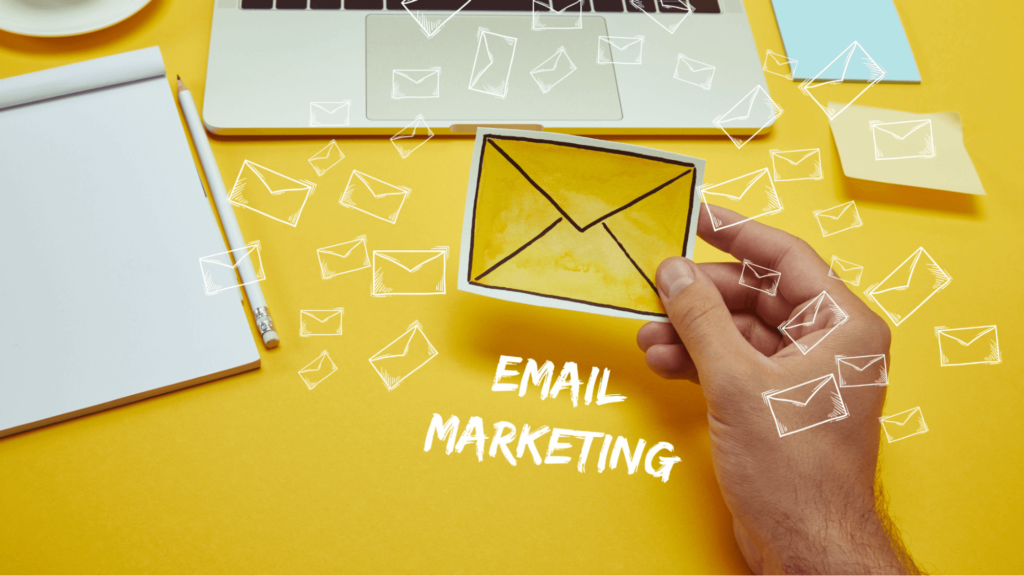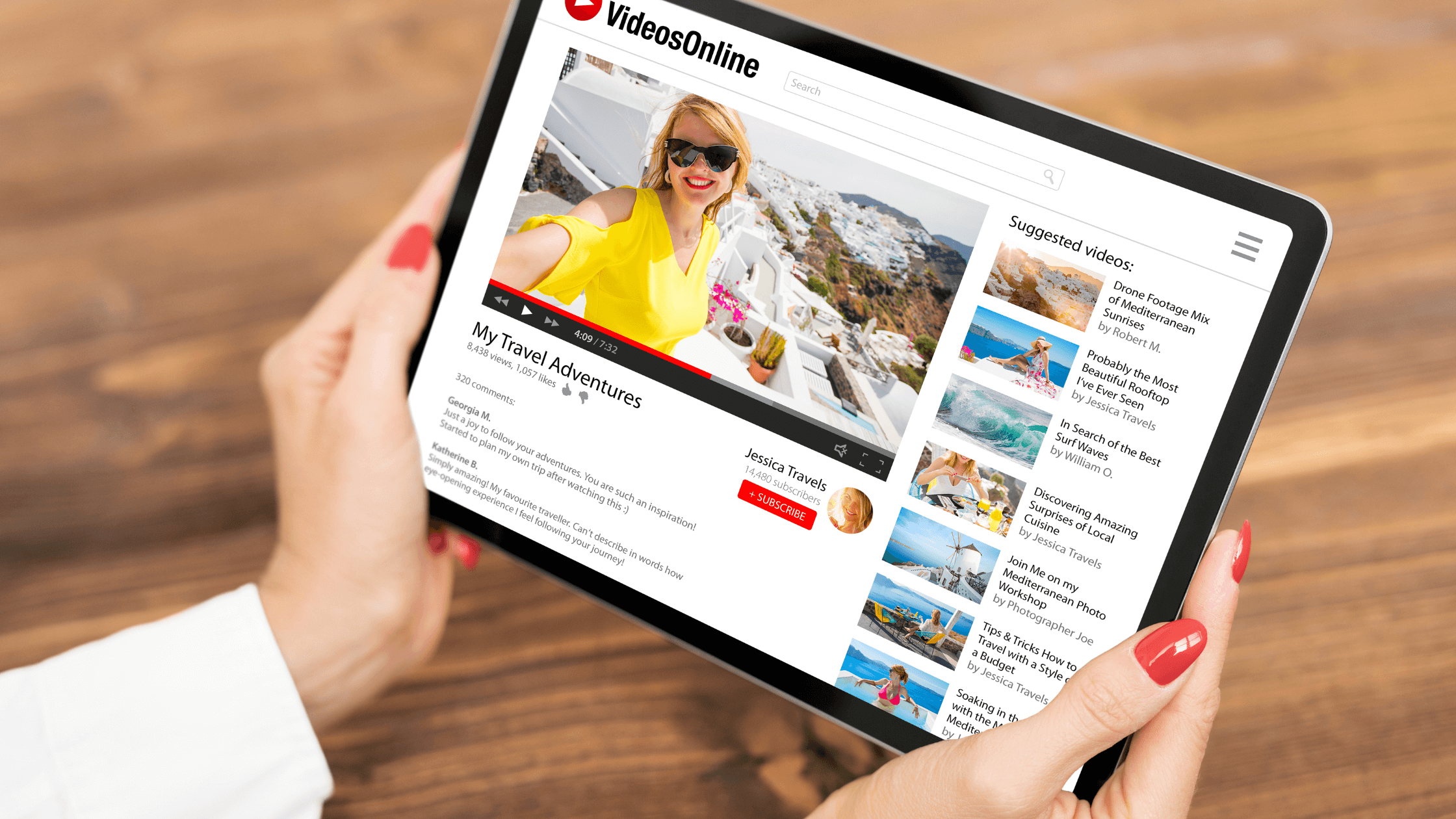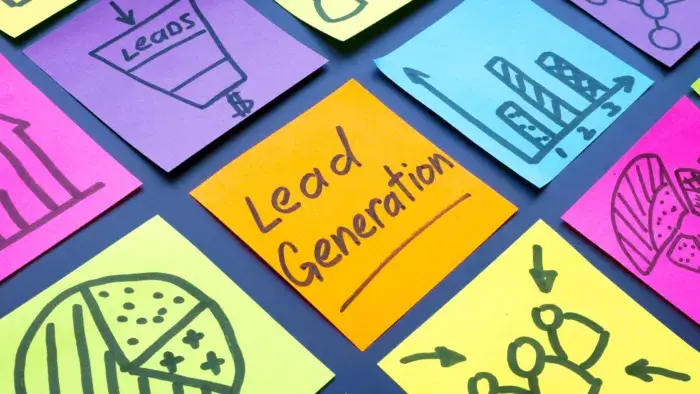If you’ve ever wondered…
“What is digital marketing?”
… you’ve come to the right place.
In this guide, I’ll explain the basics of digital marketing. You’ll learn how effective digital strategies can transform your online presence, driving business growth and success.
Let’s dive in and unlock the potential digital marketing has for your brand.
We’ll start with the million-dollar question:
What is Digital Marketing?
Digital marketing uses the power of the internet and various digital tools to promote products and services.
Unlike traditional marketing, which often relies on physical mediums, digital marketing thrives online.
It uses platforms like search engines, social media, emails and other digital networks to effectively connect with potential and current customers.
What are the Types of Digital Marketing?
There are seven types of digital marketing.
Let’s look at each to see how these methods strengthen your business’s online presence.
1. Influencer Marketing

Influencer marketing is a strategic approach that involves partnering with individuals who have built significant followings on digital platforms.
These influencers, often regarded as experts or trendsetters in their niches, use their social media profiles, blogs or video channels to showcase and recommend products or services to their audience.
The strength of influencer marketing lies in the authentic and personal relationship these influencers have with their followers.
The connection between the influencer and the audience allows the influencer to make a more organic product introduction than traditional advertising methods can offer.
The critical element in influencer marketing is selecting the right influencer.
A niche influencer with a smaller audience often proves more effective due to their highly engaged following.
Because of the influencer’s focused content, their audience is typically more primed and receptive to buying than an audience you might find under an influencer with a more significant following.
2. Search Engine Optimization (SEO)

Search engine optimization, commonly known as SEO, is focused on improving a website’s visibility in the search engine results.
SEO is understanding what people are searching for online, the answers they seek, the words they’re using, and the type of content they wish to consume.
When you align your website’s content with these insights, you increase the chances of appearing in front of your target audience when they use search engines like Google.
Some of the elements you need to optimize include your website:
- Content
- Structure
- Titles
- Meta descriptions
- Keywords
The beauty of SEO lies in its ability to drive organic traffic to your site, which is traffic you don’t have to pay for directly.
It’s also crucial for building long-term brand awareness, establishing online authority, and ensuring the sustainability of your online presence.
3. Content Marketing

When you use content marketing, you create and share valuable content — blog posts, videos, podcast episodes or infographics — to attract and engage a specific target audience.
Good content marketing doesn’t feel like a sales pitch. Instead, it educates, informs or entertains, helping potential customers and creating a positive association with your brand.
The core idea of content marketing is to establish yourself as a thought leader or a reliable source of information in your field.
You stand out from the noise when you offer value. You also create an opportunity for your audience to connect with your brand on a deeper level.
This connection leads to higher engagement, increased brand recognition and better customer conversion.
4. Social Media Marketing

Social media marketing uses social media platforms to directly or indirectly promote a product or service.
With social media marketing, you leverage the power and reach of social media networks to achieve your marketing and branding goals. You also build customer relationships and engage with a broader audience.
What makes social media marketing unique is the potential for direct interaction and engagement between you and your potential customers.
Platforms like Facebook, Instagram, X (formerly Twitter) and LinkedIn offer various ways to share content, have conversations and build communities.
The key to successful social media marketing is understanding your target audience — what platforms they use, what content they prefer and when they are most active online.
5. Paid Advertising

Paid advertising means paying for ad placements to promote your products or services on various digital platforms.
Paid advertising stands out from organic strategies like SEO or social media marketing because it offers immediate visibility. It allows you to specifically target audiences with precise targeting options.
Another advantage of paid advertising is its scalability and measurability.
You can start with a modest budget, test different ad versions and scale up the ones that perform the best.
Tools provided by your ad platforms offer detailed analytics, allowing you to track the performance of your ads in real-time, measure your return on investment and make decisions based on data.
6. Affiliate Marketing

Affiliate marketing is a performance-based approach where you collaborate with individuals or other companies to promote your products or services.
It’s a cost-effective strategy, ideal for expanding your online presence and sales without significantly increasing your marketing budget.
Your affiliates are compensated through commissions for each sale they generate.
This model is easier on your wallet as it minimizes your upfront marketing costs. You’ll only make payments based on tangible results.
Plus, affiliate marketing leverages your affiliates’ diverse audiences and platforms, making it easier to reach new audiences.
However, its success hinges on carefully selecting and managing your affiliates.
Partnering with those who align with your brand values and genuinely connect with your target audience is crucial.
7. Email Marketing

Email marketing is a powerful digital marketing strategy that sends emails to prospects and customers. Its strength lies in its direct and personalized approach.
Unlike other digital marketing tactics that target broad audiences, email marketing allows you to customize your messages for different audience segments based on their interests, behaviors and past interactions with your brand.
You can craft various types of emails, such as welcoming new subscribers, offering exclusive discounts to loyal customers or providing informational content about your products or services, each designed to resonate with the specific needs and interests of the recipients.
Another advantage of email marketing is its measurability.
With comprehensive analytics for each campaign, metrics like open rates, click-through rates and conversions are readily trackable.
You’ll get valuable insights into your audience’s preferences and behaviors, allowing you to continually refine and improve your email marketing tactics.
Consequently, your emails remain engaging, effective and in line with the evolving interests of your audience.
Why is Digital Marketing Important?
Digital marketing plays a pivotal role in a business’s success. It’s not just another marketing channel. It’s become a fundamental part of reaching and engaging with your audience.
Here’s why.
1. Wide Reach and Global Access

Digital marketing breaks geographical barriers, helping you reach audiences far and wide.
Whether you have a small local business or run a large corporation, digital platforms allow you to market products and services globally, often with minimal investment compared to traditional marketing methods.
2. Cost-effective and Scalable

Digital marketing is cost-effective.
Especially for small businesses or startups, digital marketing offers a more affordable alternative to traditional advertising channels. With various tools and platforms available, you can start small, measure their effectiveness and scale up as needed.
3. Targeted and Personalized Marketing

With digital marketing, you can create highly targeted campaigns, reaching audiences with specific demographics, interests and behaviors.
This level of targeting leads to more personalized and effective marketing efforts. That means your message is seen by those most likely to be interested in your products or services.
4. Measurable Results and Analytics

Every click, view, and conversion can be tracked and measured with digital marketing.
This data-driven approach helps you understand your audience better, measure the success of your marketing campaigns and make informed decisions to improve your future marketing strategies.
5. Building Brand and Customer Relationships

Digital marketing is not just about selling. It’s about creating a brand and building relationships with customers.
You can nurture these relationships through content marketing, social media engagement and email campaigns, creating loyal customers and brand advocates.
6. Staying Competitive in a Digital World

In an era where consumers turn to the internet for almost everything, a solid digital presence is crucial to staying competitive.
Digital marketing levels the playing field, allowing you to compete with larger businesses. And it’s a plus for keeping up with industry trends and customer expectations.
Digital Marketing Strategy: How to do Digital Marketing if You’re a Beginner
1. Video Marketing

Video marketing involves creating and sharing video content to promote your brand, products or services. This can range from short social media clips to longer YouTube videos or webinars.
The magic of video marketing is its ability to capture viewers’ attention and convey messages in an easily digestible format. You can use videos to demonstrate products, explain complex concepts, share customer testimonials or tell your brand story.
Videos are effective because they often create a more personal connection than text-based content.
You can start by creating short, authentic videos for social media.
As you grow more comfortable, you can explore different types of video content like tutorials, product reviews, behind-the-scenes glimpses or even live broadcasts.
2. Gamification

Gamification adds game-like elements to your marketing strategies so you transform routine interactions into fun, memorable experiences.
How?
Humans love challenges, achievements and rewards. Adding these elements to your marketing encourages your audience to get involved and interact with your content.
Implementing basic gamification techniques in your social media campaigns or email marketing is a great way to start.
For instance, you could launch a social media challenge where customers are encouraged to post creative photos of themselves using your product. Pick the most creative picture each week and reward the winner with a discount code or small gift.
When done right, gamification creates a more enjoyable customer experience and sets your brand apart.
3. User-Generated Content

User-generated content (UGC) is a marketing approach where you motivate customers to become storytellers for your brand. You invite them to create and share content like social media posts or reviews that reflect their experiences with your products or services.
UGC gives your business authenticity and credibility. When real customers share their genuine experiences, it adds a layer of trust and relatability to your brand. It’s a customer endorsement that’s often more persuasive than traditional marketing messages.
To kickstart UGC, encourage your customers to tag your brand in their posts or use a specific hashtag. This will increase your brand’s visibility and build a sense of community.
Hosting contests or challenges that reward customers for sharing their unique stories or experiences with your products can further boost engagement.
Then, with permission, you can feature user-generated content on your channels.
Sharing the UGC acknowledges the efforts of your customers, shows potential customers the real-world benefits of your products and helps foster a loyal customer base.
This strategy turns “regular” customers into brand ambassadors, strengthening your brand’s image.
4. Mobile Marketing
Mobile marketing focuses on engaging with your audience via smartphones and other mobile devices, which are indispensable to our modern lives.
There are different ways to use mobile marketing:
- Sending SMS alerts
- Building a mobile app
- Using QR codes
- Making your digital content mobile-responsive
The key is to meet your audience where they are most active and in a manner that fits their on-the-go lifestyle.
For those new to mobile marketing, a good starting point is to ensure your website is mobile-friendly so your users have a seamless experience on any device.
You can explore other avenues like SMS marketing, which is effective for time-sensitive offers or updates.
Additionally, location-based marketing can be a clever tactic to attract customers nearby, offering them deals when they’re near your store or business.
Final Thoughts On What Digital Marketing Is
I hope I’ve answered all your questions about digital marketing, what it is, and why it’s so important for your brand and business.
As you start adding digital marketing to your business, share with me which strategies you’re most excited to try.
Drop your thoughts in the comments below!
But before you go…
Ready to really grow your business and your impact? Then, join me for the ONLY business-building event where you’ll leave with a shorter to-do list than when you arrived!
I’ll be sharing exactly how to hone in on what to say, do and sell next in order to grow your business — with proven strategies that I’ve spent over a decade testing.
In fact, this is the 12th annual Live Your Message LIVE, and many students come back year after year — because the strategies keep working!
We’ll spend 3 days together virtually, working on your business and YOUR unique growth blueprint. Grab your seat here.
You’ll ALSO receive your very own copy of my valuable Message to Money Pathway — your unique, highly customized template that will guide you by the hand to your 6 or 7-figure business (regardless of where you’re starting from).
You’ll Zoom in “overwhelmed” and Zoom out with an exact roadmap for what to say, do and sell next to grow your business in 2024. Here’s the link again to grab your ticket.



























Leave a Comment